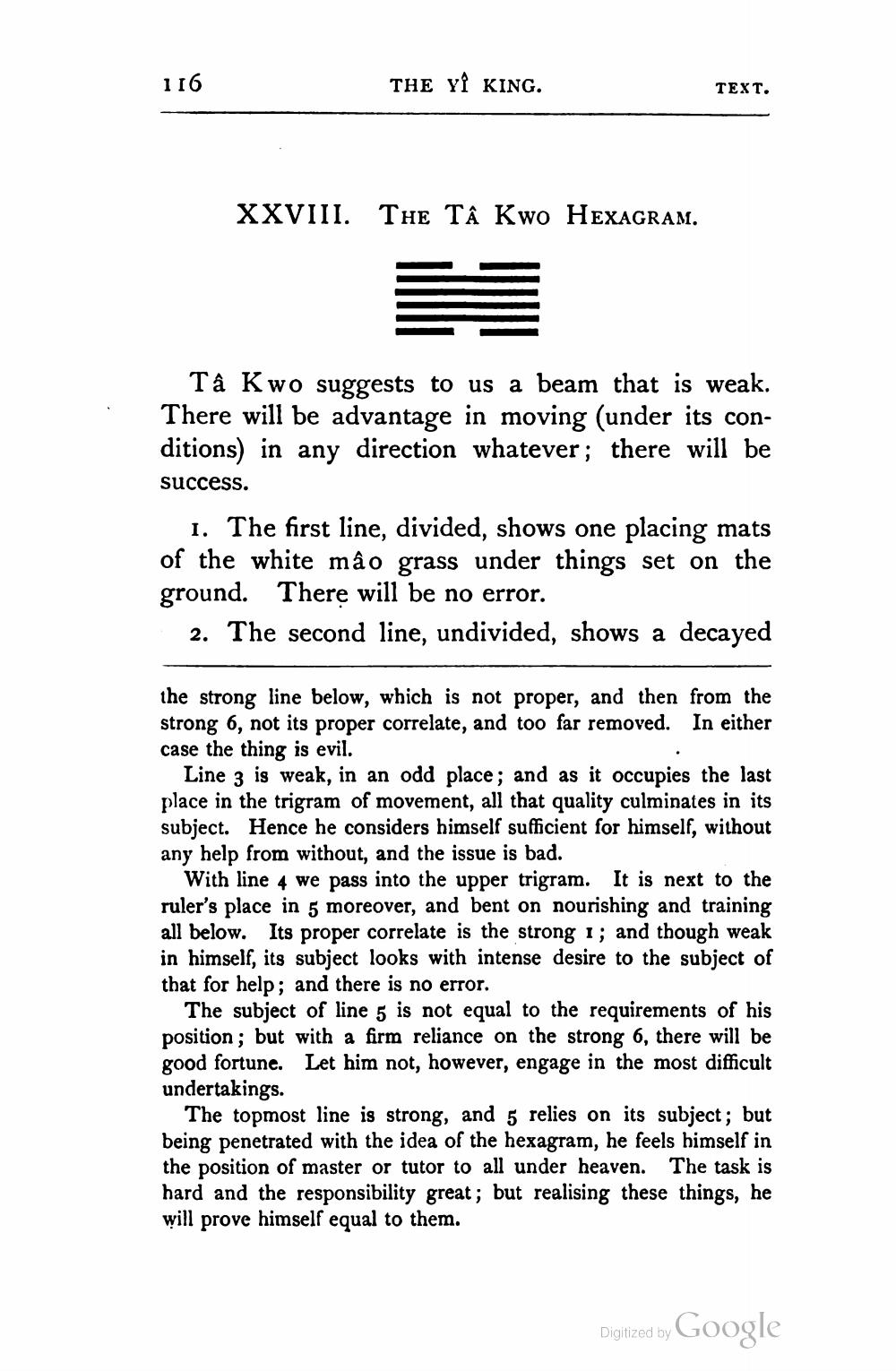________________
116
THE YÎ KING.
TEXT.
XXVIII. THE TÂ Kwo HEXAGRAM.
Tâ Kwo suggests to us a beam that is weak. There will be advantage in moving (under its conditions) in any direction whatever; there will be success.
1. The first line, divided, shows one placing mats of the white mâo grass under things set on the ground. There will be no error.
2. The second line, undivided, shows a decayed
the strong line below, which is not proper, and then from the strong 6, not its proper correlate, and too far removed. In either case the thing is evil.
Line 3 is weak, in an odd place; and as it occupies the last place in the trigram of movement, all that quality culminates in its subject. Hence he considers himself sufficient for himself, without any help from without, and the issue is bad.
With line 4 we pass into the upper trigram. It is next to the ruler's place in 5 moreover, and bent on nourishing and training all below. Its proper correlate is the strong 1 ; and though weak in himself, its subject looks with intense desire to the subject of that for help; and there is no error.
The subject of line 5 is not equal to the requirements of his position; but with a firm reliance on the strong 6, there will be good fortune. Let him not, however, engage in the most difficult undertakings.
The topmost line is strong, and 5 relies on its subject; but being penetrated with the idea of the hexagram, he feels himself in the position of master or tutor to all under heaven. The task is hard and the responsibility great; but realising these things, he will prove himself equal to them.
Digitized by Google




